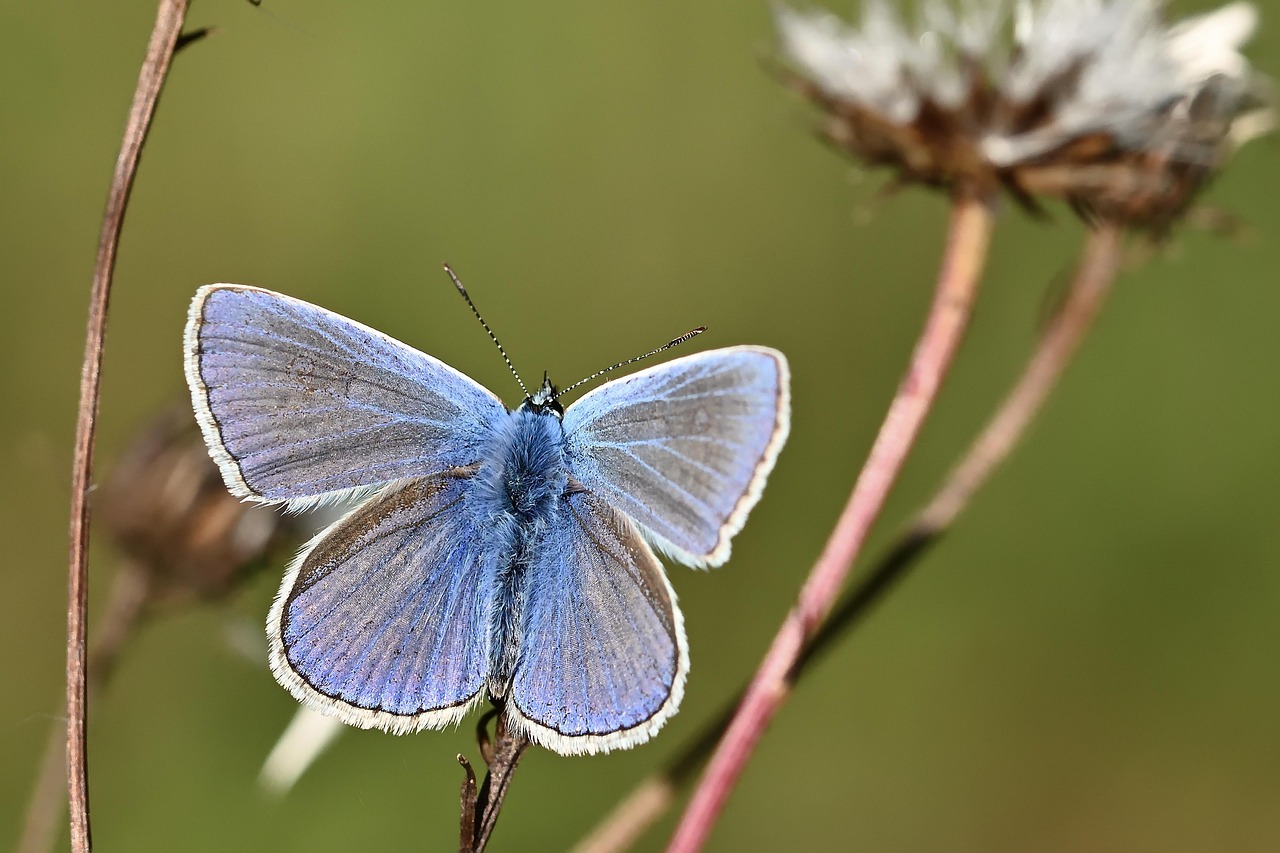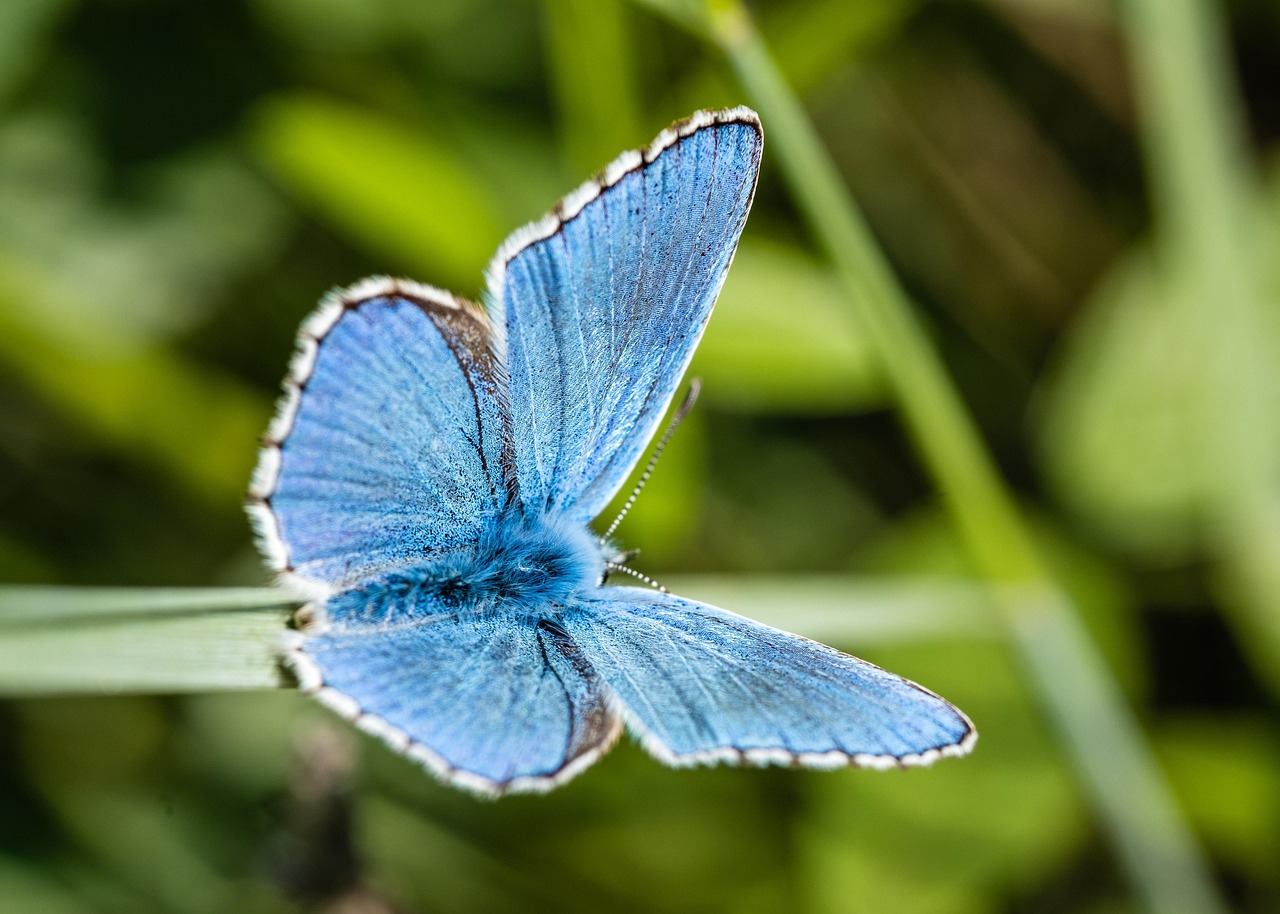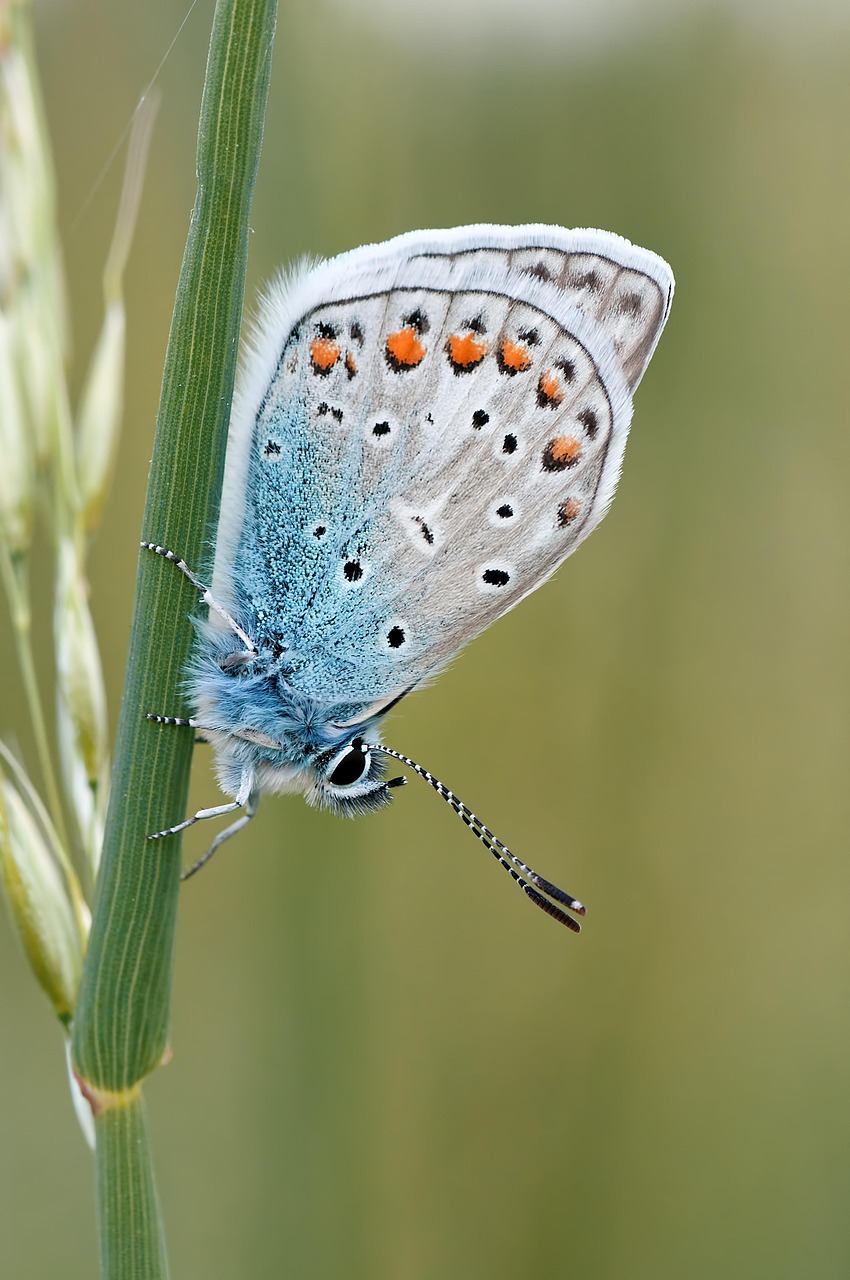The Karner Blue Butterfly plays a crucial role in its ecosystem by acting as an indicator species. Its presence reflects the health of specific habitats, particularly those dominated by wild lupine, which is vital for its survival. Conservation efforts for this butterfly also support broader ecological networks and biodiversity.
Understanding the Karner Blue Butterfly

The Karner Blue Butterfly (Lycaeides melissa samuelis) is a small butterfly native to the United States, primarily found in the northeastern and north-central regions. This species is recognized for its striking blue wings, which are often adorned with black spots. The butterfly was first identified in the late 19th century, but its populations have drastically declined due to habitat loss, invasive species, and changes in land use.
The Karner Blue Butterfly has specific habitat requirements. It thrives in sandy soils that support wild lupine (Lupinus perennis), its primary food source during the larval stage. The larvae depend on this plant, which is also an essential component of its ecosystem. The decline in wild lupine due to urban development and agricultural practices has led to a significant decrease in Karner Blue populations.
Ecological Importance of Karner Blue Butterfly
The conservation of the Karner Blue Butterfly is not just about preserving a single species; it is significantly tied to maintaining the health of entire ecosystems. Here are several reasons why this butterfly’s conservation is ecologically important:
- Indicator of Ecosystem Health: The presence of the Karner Blue Butterfly indicates a healthy ecosystem. Its dependence on specific plants suggests that diverse habitats are thriving.
- Biodiversity Support: Protecting the Karner Blue Butterfly helps preserve various other species that share its habitat. This includes numerous plants, insects, and other wildlife that rely on similar environmental conditions.
- Pollination: As a butterfly, it contributes to pollination. Pollinators are essential for the reproduction of many flowering plants, which are crucial for food webs and ecosystem stability.
- Educational and Research Opportunities: The study of the Karner Blue Butterfly offers insights into ecological dynamics and conservation strategies. It serves as a model for other conservation efforts across different species.
Threats to the Karner Blue Butterfly
Several factors threaten the survival of the Karner Blue Butterfly. Understanding these threats is essential for effective conservation efforts:
| Threat | Description |
|---|---|
| Habitat Loss | Urban development and agriculture have led to significant loss of habitats where wild lupine and other important plants grow. |
| Invasive Species | Non-native plants compete with wild lupine, reducing its availability for the butterfly’s larvae. |
| Climate Change | Changes in climate affect the distribution of necessary habitats, making it challenging for this species to survive. |
Conservation programs targeting the Karner Blue Butterfly not only focus on protecting this species but also aim to restore its habitat and promote biodiversity. By addressing these threats collaboratively, we can enhance the chances of survival for this remarkable butterfly and the ecosystems it supports.
Conservation Efforts and Strategies
Conserving the Karner Blue Butterfly requires a multifaceted approach that includes habitat restoration, public education, and active management of existing populations. Several organizations and government agencies are dedicated to preserving this species and its habitat. The following are key strategies employed in conservation efforts:
- Habitat Restoration: Efforts focus on restoring ecosystems that support wild lupine, the primary host plant for the butterfly’s larvae. This includes removing invasive species and reintroducing native plants.
- Land Management: Controlled burns and mechanical clearing are used to maintain open habitats that are essential for the butterfly’s lifecycle. These practices help mimic natural disturbances that the ecosystem needs.
- Monitoring Programs: Regular monitoring of Karner Blue populations helps track their status and informs conservation strategies. This includes counting individuals and assessing habitat quality.
- Public Engagement: Educating the public about the importance of the Karner Blue Butterfly and its habitat is crucial. Community involvement in conservation activities can foster a sense of stewardship.
Key Organizations Involved
Various organizations play a vital role in the conservation of the Karner Blue Butterfly. These groups work together to implement effective strategies and raise awareness:
- The Nature Conservancy: This organization is involved in habitat restoration projects and advocacy for protective legislation.
- The U.S. Fish and Wildlife Service: They oversee the implementation of the Endangered Species Act, which provides protections for the Karner Blue Butterfly.
- Local Conservation Groups: Many local groups engage in hands-on conservation efforts, such as planting wild lupine and organizing community events to promote awareness.
Importance of Partnerships
Successful conservation of the Karner Blue Butterfly relies on collaboration among various stakeholders. Partnerships between government agencies, non-profit organizations, researchers, and local communities are essential. These collaborations enhance resource sharing and expertise, allowing for comprehensive conservation strategies. Some notable partnerships include:
- Public-Private Partnerships: Collaborations between government agencies and private landowners can facilitate habitat restoration on private lands, where much of the butterfly’s habitat exists.
- Research Collaborations: Academic institutions often partner with conservation organizations to conduct research on butterfly populations and their habitats, providing valuable data for management decisions.
- Community Involvement: Engaging local communities in conservation efforts fosters a sense of ownership and responsibility, encouraging sustainable practices that benefit both people and wildlife.
The Role of Education in Conservation
Education is a cornerstone of effective conservation strategies. Raising awareness about the Karner Blue Butterfly can inspire individuals to take action. Educational programs often focus on:
- School Programs: Educational initiatives in schools can teach students about local ecosystems and the importance of biodiversity. Field trips to habitats can provide hands-on learning experiences.
- Workshops and Events: Community workshops can educate residents about native plants, gardening practices, and ways to create butterfly-friendly habitats in their backyards.
- Online Resources: Websites and social media campaigns can spread awareness about the butterfly’s plight and promote conservation initiatives.
By fostering a deeper understanding of the ecological significance of the Karner Blue Butterfly, these educational efforts can mobilize communities toward meaningful action. Each individual’s contribution, no matter how small, can collectively make a significant impact on the conservation of this species.
Research and Monitoring

Scientific research plays a pivotal role in informing conservation strategies for the Karner Blue Butterfly. Ongoing studies help identify critical habitat requirements, population dynamics, and responses to environmental changes. Key areas of research include:
- Population Genetics: Understanding genetic diversity within populations can help identify strategies for breeding programs and habitat connectivity.
- Behavioral Studies: Research into the feeding and mating behaviors of the butterfly can provide insights into what conditions are most conducive to their survival.
- Ecosystem Interactions: Studying interactions between the Karner Blue Butterfly and other species helps clarify its role within the ecosystem, guiding effective management practices.
This comprehensive approach ensures that conservation efforts are grounded in scientific evidence, enhancing their effectiveness in protecting the Karner Blue Butterfly for future generations.

Community Involvement in Conservation
Community involvement is essential for the success of conservation efforts aimed at protecting the Karner Blue Butterfly. Engaging local residents fosters a sense of stewardship and responsibility towards the environment. Various initiatives encourage community participation in conservation activities, which can have lasting impacts on both the butterfly and its habitat.
Volunteer Programs
Volunteer programs allow individuals to contribute directly to conservation efforts. These programs can include a variety of activities such as:
- Habitat Restoration: Volunteers can participate in planting native species, removing invasive plants, and conducting maintenance on restored habitats.
- Monitoring Populations: Community members often assist in butterfly counts and surveys, helping scientists gather valuable data on population trends.
- Educational Outreach: Volunteers can help organize and lead educational events, sharing information about the Karner Blue Butterfly and its significance with others.
Citizen Science Initiatives
Citizen science initiatives empower individuals to participate in scientific research. These projects often involve:
- Data Collection: Community members can collect data on butterfly sightings, behavior, and habitat conditions, providing researchers with important information.
- Training Workshops: Participants receive training on how to correctly identify the Karner Blue Butterfly and other species, enhancing their ability to contribute effectively.
- Community Events: Organizing events like butterfly festivals can raise awareness and create opportunities for locals to engage with conservation efforts.
The Role of Legislation in Conservation
Legislation plays a crucial role in the protection of the Karner Blue Butterfly. Legal frameworks help safeguard habitats and ensure that conservation efforts are supported at various levels. Key aspects of legislation include:
Endangered Species Act
The Karner Blue Butterfly is listed as endangered under the Endangered Species Act (ESA). This federal law provides several protections, including:
- Habitat Protection: Critical habitats are designated to ensure that essential areas for the butterfly’s survival are preserved from development and degradation.
- Recovery Plans: The ESA mandates the creation of recovery plans that outline specific actions needed to restore populations and habitats.
- Funding Opportunities: The act facilitates funding for conservation projects aimed at protecting endangered species, including the Karner Blue Butterfly.
State-Level Protections
Many states have enacted their own conservation laws to protect the Karner Blue Butterfly. These laws often complement federal regulations by:
- Regulating Land Use: States can impose restrictions on land use practices that threaten the butterfly’s habitat.
- Enhancing Local Conservation Efforts: State agencies may implement programs that promote habitat restoration and management at local levels.
- Encouraging Research and Monitoring: State laws can support research initiatives that help identify effective conservation strategies.
The Economic Value of Conservation

Conserving the Karner Blue Butterfly also has significant economic implications. Protecting this species contributes to ecosystem services that benefit local communities and economies. Some key points to consider include:
Ecosystem Services
The Karner Blue Butterfly and its habitat provide essential ecosystem services such as:
- Pollination: Butterflies are important pollinators for many plants, contributing to agricultural productivity and the health of ecosystems.
- Biodiversity Maintenance: Healthy ecosystems support a variety of species, which can enhance resilience against environmental changes.
- Aesthetic Value: Natural areas that host butterflies attract tourists and nature enthusiasts, contributing to local economies through ecotourism.
Cost-Effective Conservation
Investing in conservation programs for the Karner Blue Butterfly can be more cost-effective than addressing environmental degradation later. Preventative measures often lead to savings in:
- Restoration Costs: Maintaining healthy ecosystems reduces the need for expensive restoration projects.
- Pest Control: Biodiverse ecosystems help control pests naturally, decreasing dependence on chemical pesticides.
- Public Health Costs: Healthy environments contribute to better public health outcomes by reducing pollution and promoting active lifestyles.
By recognizing the ecological and economic benefits of conserving the Karner Blue Butterfly, communities can prioritize sustainable practices that support both wildlife and human well-being.
Future Prospects for the Karner Blue Butterfly
The future of the Karner Blue Butterfly hinges on continued and enhanced conservation efforts. As we look ahead, several factors will play a significant role in determining the success of these initiatives. Key areas of focus include:
Adaptive Management Strategies
Implementing adaptive management strategies will be crucial for responding to changing conditions in the butterfly’s habitat. These strategies involve:
- Regular Assessment: Continuously monitoring populations and habitat quality allows for timely adjustments to conservation practices based on observed outcomes.
- Incorporating Research Findings: New scientific research can provide insights into effective conservation methods, ensuring that strategies remain relevant and effective.
- Flexibility in Approaches: Being open to change and adapting management strategies in response to environmental challenges will enhance the resilience of conservation efforts.
Expanding Conservation Areas
Identifying and protecting additional habitats is essential for the long-term survival of the Karner Blue Butterfly. Expanding conservation areas can:
- Enhance Connectivity: Creating corridors between fragmented habitats helps facilitate movement between populations, promoting genetic diversity.
- Increase Habitat Size: Larger protected areas can support more robust ecosystems, thereby improving resilience against environmental changes.
- Involve Stakeholders: Engaging landowners and local communities in conservation planning will support broader habitat protection efforts.
Climate Change Mitigation
Addressing climate change is vital for protecting the Karner Blue Butterfly. Effective strategies include:
- Reducing Carbon Footprint: Encouraging sustainable practices that minimize greenhouse gas emissions will help mitigate climate impacts on ecosystems.
- Restoration Projects: Implementing projects that restore ecosystems can enhance their capacity to absorb carbon and adapt to changing climates.
- Community Resilience Building: Educating communities about climate adaptation strategies can empower them to take proactive measures to protect their local environments.
Final Thoughts
The conservation of the Karner Blue Butterfly is a multifaceted challenge that requires a collaborative effort from individuals, organizations, and governments. By recognizing the ecological importance of this species, we understand that efforts to protect it go beyond preserving a single butterfly. They are about maintaining biodiversity, supporting ecosystem health, and ensuring that future generations can enjoy the beauty and benefits of nature.
The combined economic, ecological, and educational benefits of conserving the Karner Blue Butterfly highlight the interconnectedness of our natural world. As we invest in these conservation initiatives, we not only protect a vulnerable species but also enhance the resilience of our ecosystems and communities. The actions we take today will determine the future of the Karner Blue Butterfly and the myriad of life forms that depend on healthy habitats.
Ultimately, the success of conservation efforts for the Karner Blue Butterfly serves as a reminder of our collective responsibility to safeguard the environment. By working together, we can create a sustainable future where both people and wildlife thrive in harmony.
